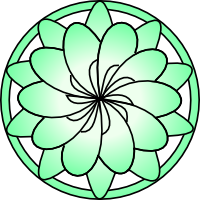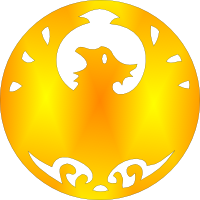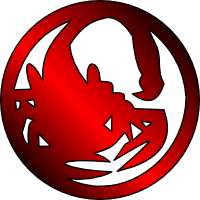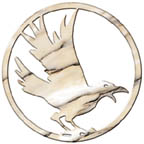Daily History Lessons VIII (Day 9, Late Afternoon)
"Minna-sama," the Hare stood before the people in the Northern Camp as usual. "I am Usagi Tomoe, historian of the Hare Clan. For the past week, I have spoken of great battles that have shaped the Empire. Today, I speak of one of the great traditions that have a great impact on the Empire's society; the tradition of the Topaz Championship."
"The Topaz Championship is the most prestigious gempukku ceremony in the Empire. Every spring, during the Month of Hantei, the village of Tsuma in the Kakita provinces of the Crane Clan host the contest that invites the most promising students of all the Clans, Great or Minor. The tournament tests the participants on many different skills that a samurai is supposed to know, ranging from poetry, lore and etiquette, and culminating with a test of iaijutsu. The contestant who performs the best, is traditionally gifted with a golden kabuto, and the Topaz Armour."
"The Kakita Duelling Academy, which hosts the yearly tournament, is the center of the Kakita Family. It's origins are traced back to the first followers of Lord Kakita, who learned his style directly from him, but after his death it is said that the class could not remain where it was in the palace of Lady Doji. While Lady Doji had always had an interest in her husband's art, after his passing she would visit less and less, and the students noted how it pained the Lady of the Crane to see them practising her husband's techniques as she was reminded of the loss of her beloved. Lord Kakita's followers relocated their dojo instead to relatively unfertile lands of the Crane and there they began the work that would create the Kakita Dueling Academy. The location was chosen for tactical reasons, as lands with little agricultural use would not attract any major force trying to claim the land, thus in the early days of the Empire, it could be held with a minial amount of troops. Today, it stands as one of the most prestigious dojo in the Empire, where many Emperors have recieved their training, and students of the Academy itself can be recognized by the single stripe of silver on the right side of their family mon on their kimono."
"As the prestige of the Kakita's dojo grew, other clans began to have an interest in testing their best and brightest against the promising students of the Kakita Academy. This eventually led to the Crane beginning to send out yearly invitations to all the clans and imperial families, and even many Emperors expressed interests in attending, which only gave further prestige and glory to the gempukku ceremony of the Academy. The name itself is said to have been given by one of the first Emperors in attendance to see the competition, who began to fondly name the young winners his 'Topaz Champions'. For the past generations, the highest honor a young samurai-to-be might recieve is to be given the trust of representing the teachings of their clan, dojo and sensei at the yearly Topaz Championship."
"The tests are spread out over a series of days, and while there are some things that never change, such as the final test being that of iaijutsu, the competition have sometimes lasted up to over a week, and in other time-periods lasting only three days. The tournament follows a scoring system, based on how well the contestants perform, and contestants need to have a certain number of points to be allowed to pass their gempukku. Like with the tests, the amount of points required has also been subject to change depending on the political circumstances in the Empire or by decision of the presiding judges."
"The most traditional tests have been: Sumai, heraldry, athletic obstacle courses, horseriding, knowledge of law, knowledge of etiquette, understanding of Bushido, skill at arms, poetry, understanding of court, Go, archery, hunting, and finally, Iaijutsu."
"The contestant with the most points, who has competed with honor and skill, is rewarded the title of Topaz Champion. And while the title in itself have no responsibilities or legal standing, it is a title of prestige and glory that often elevates the Champion to greatness - many Topaz Champions have gone on to become commanders in the Imperial Legions, Emerald or Jade Magistrates, yojimbo to important Daimyo or other prominent figures. And as the tournament is repeated each year, it is the responsibility and tradition of the past year's winner to return to pass the Topaz Armor onto the new year's winner."
"Now, as Heraldry is one of the traditional tests, Seppun Hideo-sama has helped prepare the mon of all the Imperial Families, Great Clans and Minor Clans. Please feel free to test yourselves, or ask questions about them if you have any."
"The Topaz Championship is the most prestigious gempukku ceremony in the Empire. Every spring, during the Month of Hantei, the village of Tsuma in the Kakita provinces of the Crane Clan host the contest that invites the most promising students of all the Clans, Great or Minor. The tournament tests the participants on many different skills that a samurai is supposed to know, ranging from poetry, lore and etiquette, and culminating with a test of iaijutsu. The contestant who performs the best, is traditionally gifted with a golden kabuto, and the Topaz Armour."
"The Kakita Duelling Academy, which hosts the yearly tournament, is the center of the Kakita Family. It's origins are traced back to the first followers of Lord Kakita, who learned his style directly from him, but after his death it is said that the class could not remain where it was in the palace of Lady Doji. While Lady Doji had always had an interest in her husband's art, after his passing she would visit less and less, and the students noted how it pained the Lady of the Crane to see them practising her husband's techniques as she was reminded of the loss of her beloved. Lord Kakita's followers relocated their dojo instead to relatively unfertile lands of the Crane and there they began the work that would create the Kakita Dueling Academy. The location was chosen for tactical reasons, as lands with little agricultural use would not attract any major force trying to claim the land, thus in the early days of the Empire, it could be held with a minial amount of troops. Today, it stands as one of the most prestigious dojo in the Empire, where many Emperors have recieved their training, and students of the Academy itself can be recognized by the single stripe of silver on the right side of their family mon on their kimono."
"As the prestige of the Kakita's dojo grew, other clans began to have an interest in testing their best and brightest against the promising students of the Kakita Academy. This eventually led to the Crane beginning to send out yearly invitations to all the clans and imperial families, and even many Emperors expressed interests in attending, which only gave further prestige and glory to the gempukku ceremony of the Academy. The name itself is said to have been given by one of the first Emperors in attendance to see the competition, who began to fondly name the young winners his 'Topaz Champions'. For the past generations, the highest honor a young samurai-to-be might recieve is to be given the trust of representing the teachings of their clan, dojo and sensei at the yearly Topaz Championship."
"The tests are spread out over a series of days, and while there are some things that never change, such as the final test being that of iaijutsu, the competition have sometimes lasted up to over a week, and in other time-periods lasting only three days. The tournament follows a scoring system, based on how well the contestants perform, and contestants need to have a certain number of points to be allowed to pass their gempukku. Like with the tests, the amount of points required has also been subject to change depending on the political circumstances in the Empire or by decision of the presiding judges."
"The most traditional tests have been: Sumai, heraldry, athletic obstacle courses, horseriding, knowledge of law, knowledge of etiquette, understanding of Bushido, skill at arms, poetry, understanding of court, Go, archery, hunting, and finally, Iaijutsu."
"The contestant with the most points, who has competed with honor and skill, is rewarded the title of Topaz Champion. And while the title in itself have no responsibilities or legal standing, it is a title of prestige and glory that often elevates the Champion to greatness - many Topaz Champions have gone on to become commanders in the Imperial Legions, Emerald or Jade Magistrates, yojimbo to important Daimyo or other prominent figures. And as the tournament is repeated each year, it is the responsibility and tradition of the past year's winner to return to pass the Topaz Armor onto the new year's winner."
"Now, as Heraldry is one of the traditional tests, Seppun Hideo-sama has helped prepare the mon of all the Imperial Families, Great Clans and Minor Clans. Please feel free to test yourselves, or ask questions about them if you have any."
Seppun Hideo wrote:The Imperial Families wrote:
- The Hantei
- The Miya
Vassal Families:
Anou- The Otomo
Vassal Families:
Kagami
Reju- The Seppun
Vassal Families:
HanakoThe Crab wrote:
- The Hida
Vassal Families:
Kakaguchi
Moshibaru- The Hiruma
Vassal Families:
Kitano- The Kaiu
Vassal Families:
Fundai- The Kuni
Vassal Families:
Ugawari- The Yasuki
Vassal Families:
Kano
RaikutoThe Crane wrote:
- The Asahina
Vassal Families: None- The Daidoji
Vassal Families:
Hiramichi
Hiramori- The Doji
Vassal Families:
Katogama- The Kakita
Vassal Families:
Ashidaka
IwasakiThe Dragon wrote:
- Agasha
Vassal Families:
Atsumaru- Mirumoto
Vassal Families:
Kouken
Zurui- Togashi
Vassal Families:None- Tonbo
Vassal Families:NoneThe Lion wrote:
- Akodo
Vassal Families:
Katai- Ikoma
Vassal Families: None- Kitsu
Vassal Families:
Ise- Matsu
Vassal Families:
Koritome
Shikyo- Shimizu
Vassal Families:NoneThe Phoenix wrote:
- Asako
Vassal Families:
Nani
Chukan- Isawa
Vassal Families:None- Shiba
Vassal Families:
NasuThe Scorpion wrote:
- Bayushi
Vassal Families: None- Shosuro
Vassal Families:
Kochako
Tokagure- Soshi
Vassal Families:
Nanbu- Yogo
Vassal Families:
Tansaku(note - still finishing this as of start of thread, post will be edited as Unicorn can update thisThe Unicorn wrote:
- Ide
Vassal Families:- Iuchi
Vassal Families:- Moto
Vassal Families:- Shinjo
Vassal Families:The Minor clans wrote:Badger Clan
- Ichiro
Vassal Families:
Fureheshu
Centipede Clan
- Moshi
Vassal Families:
Sun
Fox Clan
- Kitsune
Vassal Families:
Byako
Hare Clan
- Usagi
Vassal Families:None
Mantis Clan
Vassal Families:None
Piranha Clan
(OOC note - I don't think there is a mon
- Ryuuta
Vassal Families:None
Sparrow Clan
- Suzume
Vassal Families:
Edakumi
Tortoise clan
- Kasuga
Vassal Families:
SomeisaThe Brotherhood of Shinsei wrote:















